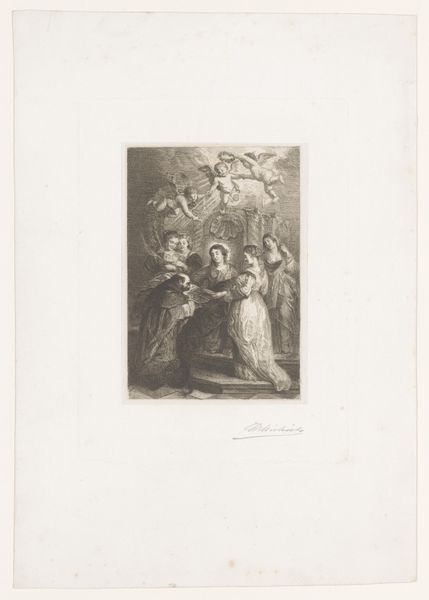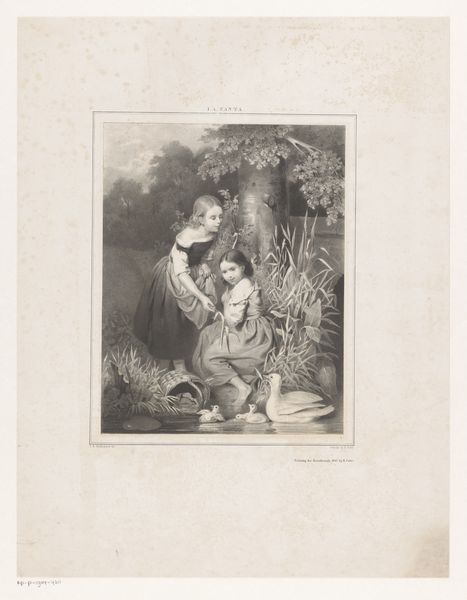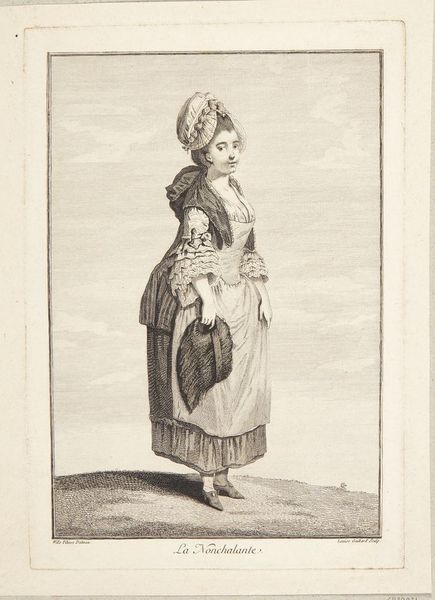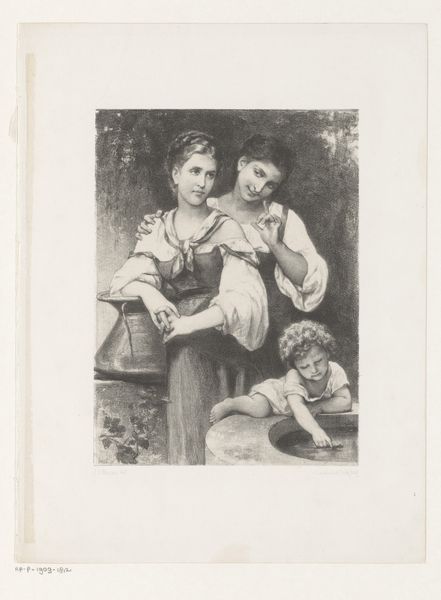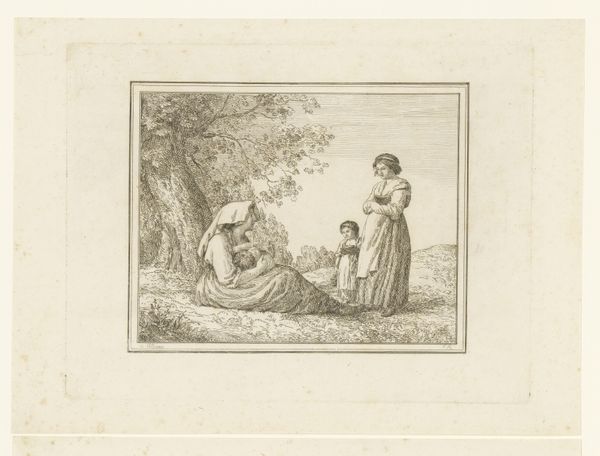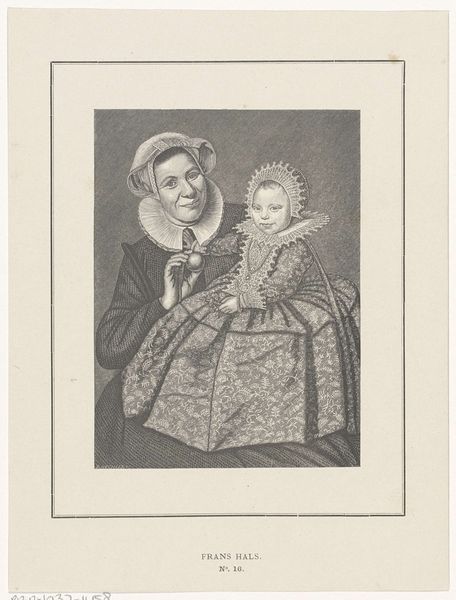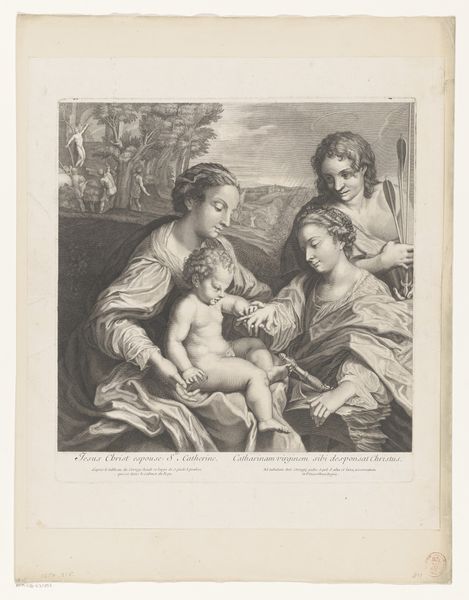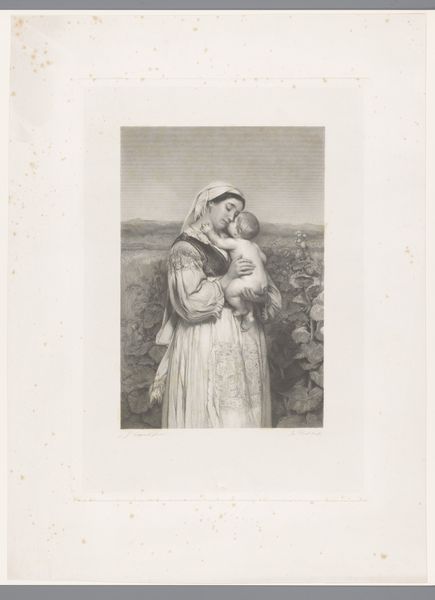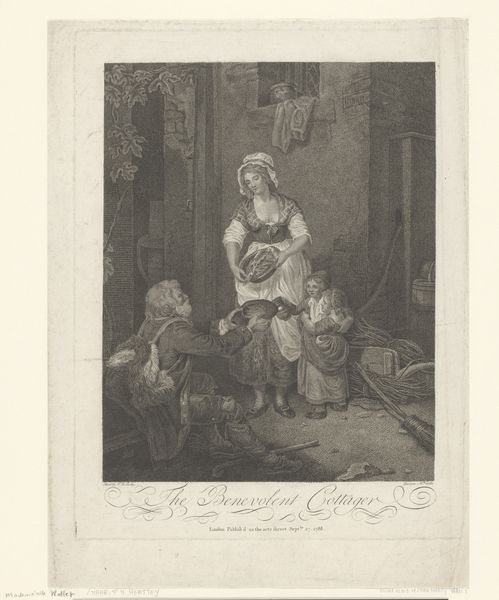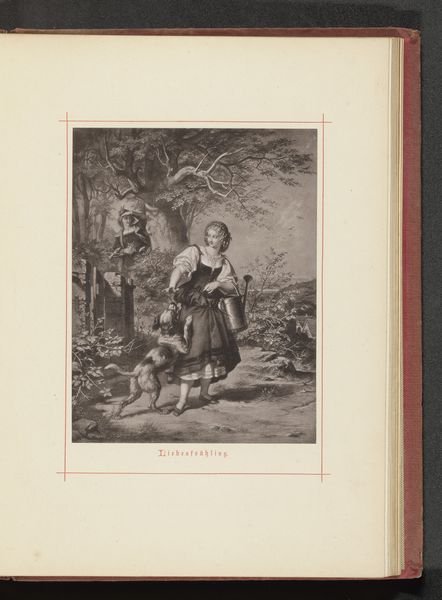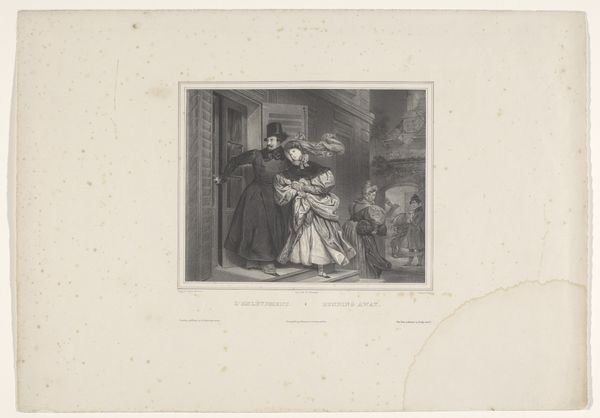
Dimensions: height 448 mm, width 365 mm
Copyright: Rijks Museum: Open Domain
Jacques Louis Copia created this print, "Pierrot met Worst," toward the end of the 18th century. We see Pierrot, a stock character from French pantomime, gleefully holding a sausage while a woman gazes up at him, seemingly in adoration. Pierrot and other characters from *commedia dell’arte* were popular subjects in French art. The pre-revolutionary French aristocracy consumed entertainments about the lives of common people with gusto. But what did it mean to represent the working classes, particularly at a time when the social order was about to be overturned? In one sense, it's a form of escapism, a way for the upper classes to experience vicariously the lives of those they considered beneath them. Yet, in another sense, the obsession with images of the common people was a way to reinforce the status quo. To truly understand the meaning of this piece, we need to consult social histories and explore the popular culture of pre-revolutionary France. It is through these historical sources that we can understand the complex relationship between art and society.
Comments
No comments
Be the first to comment and join the conversation on the ultimate creative platform.
